It’s that time of the year again when I’m anticipating my annual winter holiday in Hong Kong, a tradition that only resumed in 2023 after a three-year pandemic-induced hiatus. To me, what makes Hong Kong such an endlessly attractive place is the wide variety of attractions that this small territory has to offer. From a very modern city, complete with world-class cultural spaces (like the West Kowloon Cultural District) and well-preserved heritage buildings, to the great outdoors (the secluded white-sand beaches and picturesque hiking trails of Sai Kung are among my favorites), Hong Kong is a well-rounded, captivating place. Apart from the main island itself where most of the city’s iconic skyscrapers are located, there are more than 250 small islands across the territory, each with its own distinct character, that provide different options to suit different interests: from camping grounds to kitesurfing spots, independent retailers to trendy restaurants. One particular island I visited last year turned out to be among the most interesting of all.
I was first intrigued by Tung Lung Chau after reading James’ blog post about this part of Hong Kong from his trip in October 2022. Situated in the eastern entrance to Victoria Harbour, it might at first give the impression of a regular verdant island with a peak that looks tempting to summit. However, beyond its unassuming appearance, it is in fact home to two sites from the past that seem to be right down my alley. Regular readers of this blog know about my penchant for anything ancient, and the prospect of seeing a millennia-old rock carving and the ruins of a centuries-old fort certainly piqued my interest.
We were lucky to pick a day with perfect weather for the excursion. Departing in the morning from Shau Kei Wan in eastern Hong Kong Island, we took a slow ferry to get to our destination – much slower and smaller indeed compared to the more modern boats that connect the city with some of the more popular outlying islands. I was expecting to get seasick, but the 40-minute ride which provided a nice glimpse into parts of Hong Kong I rarely see turned out to be quite uneventful, fortunately. Minutes before stopping briefly at a small pier at Nam Tong, the early 20th-century Hung Shing Temple came into view, its white walls in stark contrast with the lush forest behind it. Not long after we and a few other passengers disembarked, the ferry continued its journey to the main pier of the island further north.
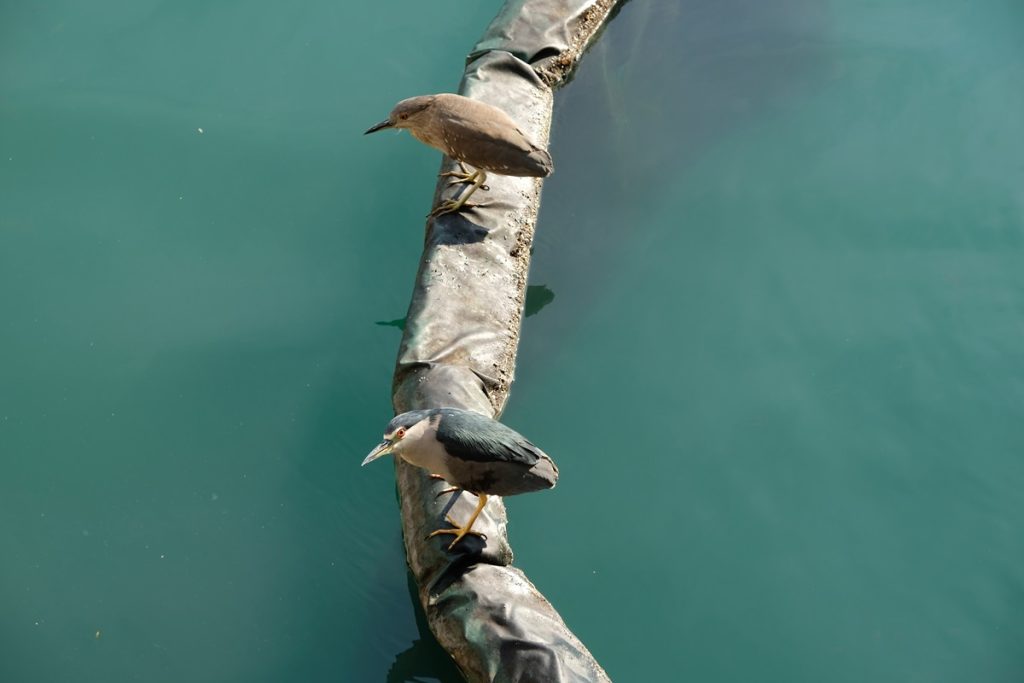
Herons on Hong Kong Island
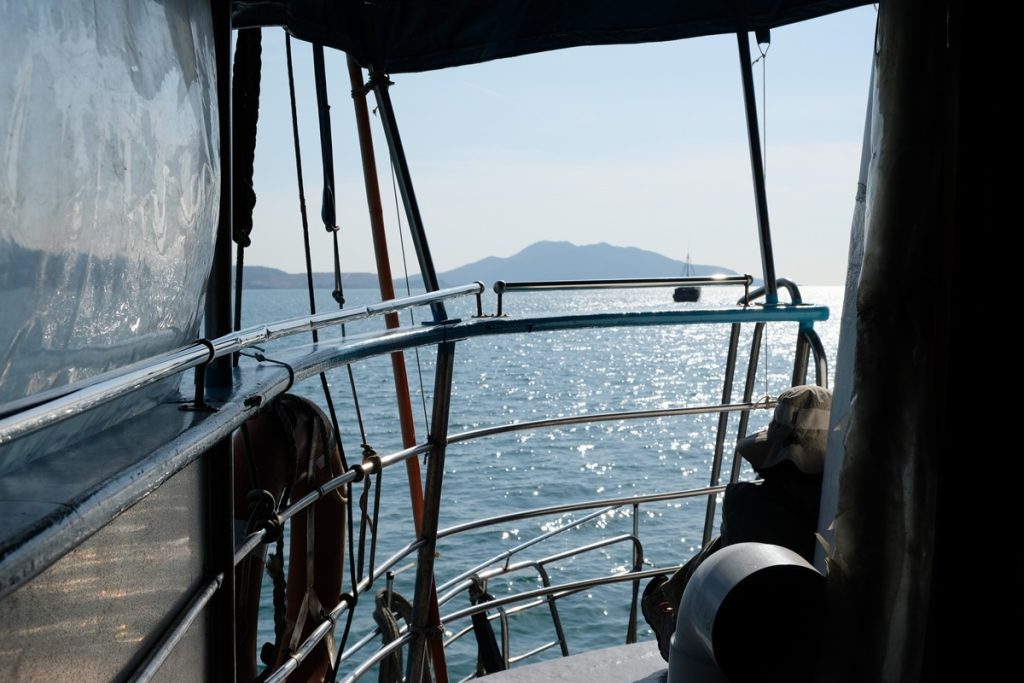
The 40-minute ferry ride to Tung Lung Chau
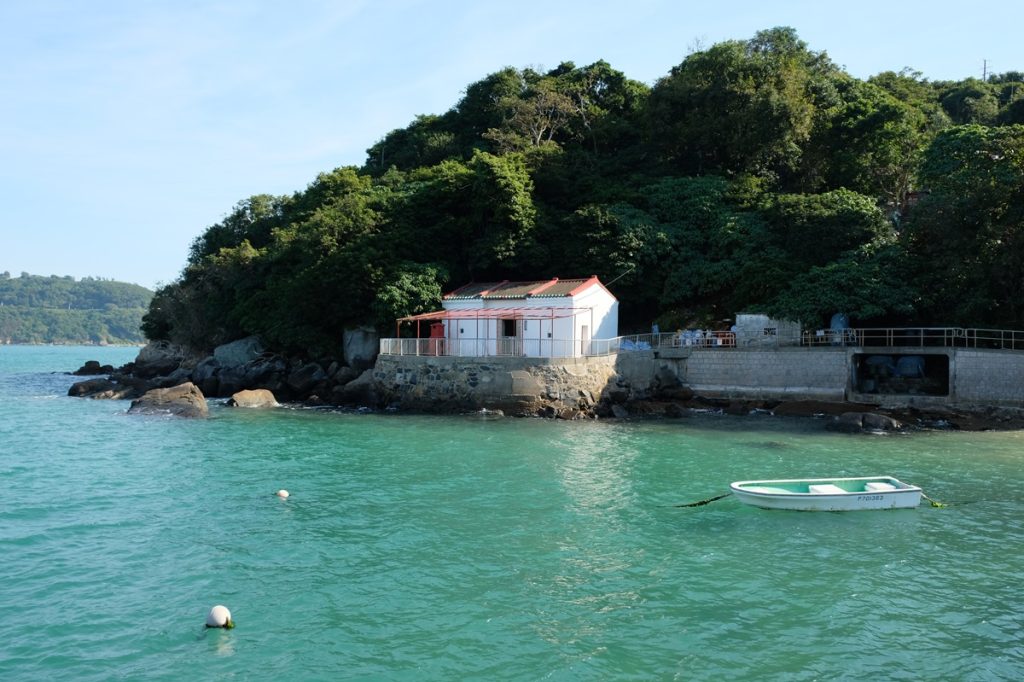
Early 20th-century Hung Shing Temple near the pier at Nam Tong, Tung Lung Chau
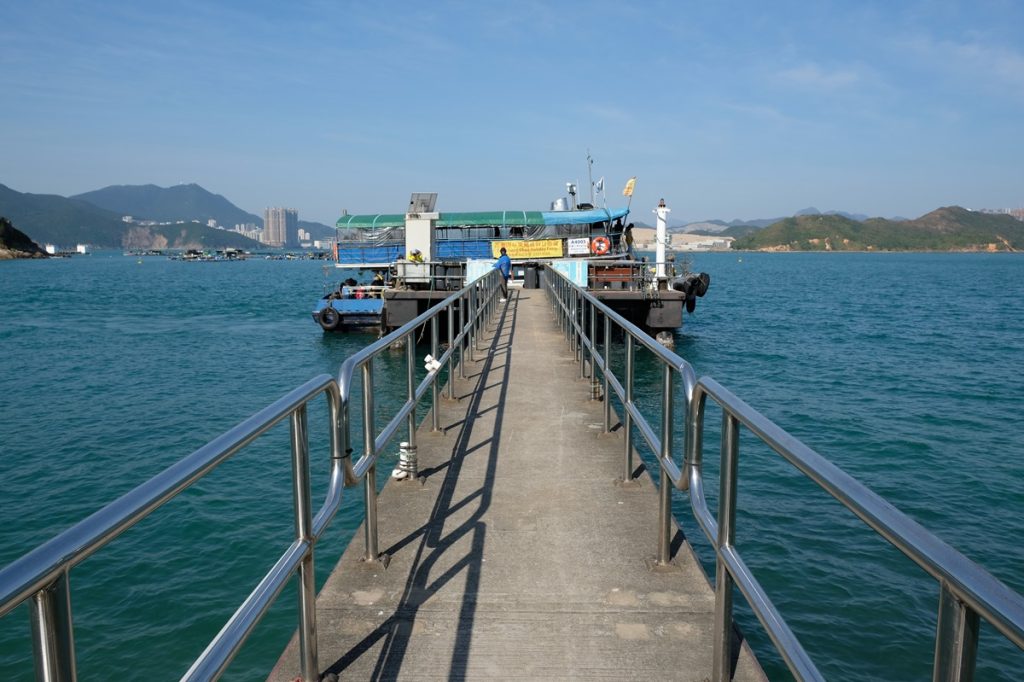
Some passengers, including us, disembarked here
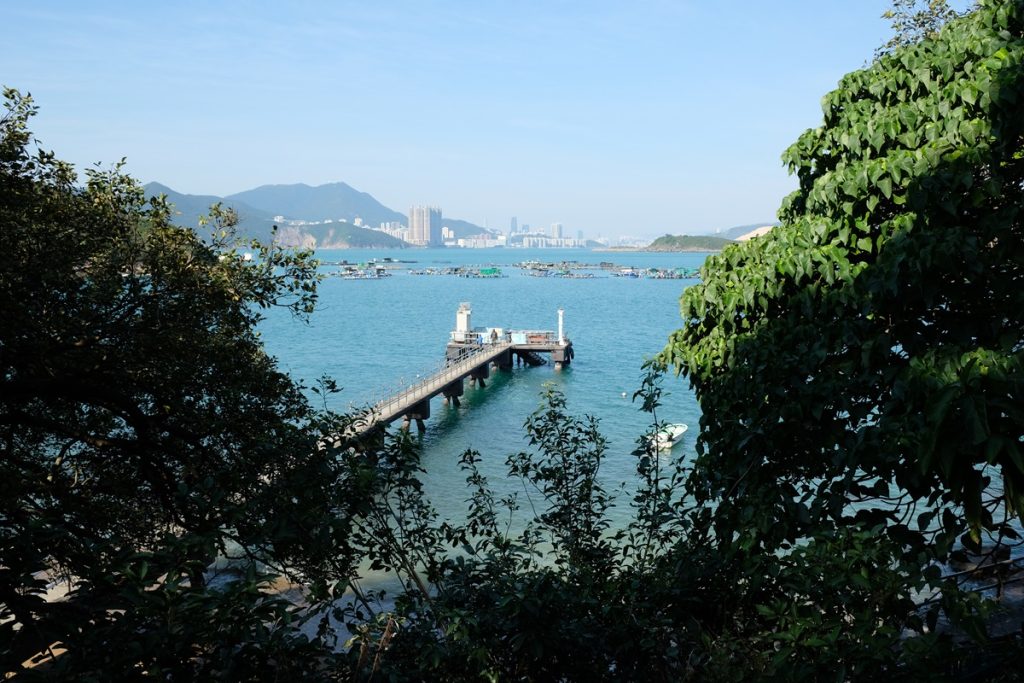
The view of the smaller pier at the beginning of the hiking trail
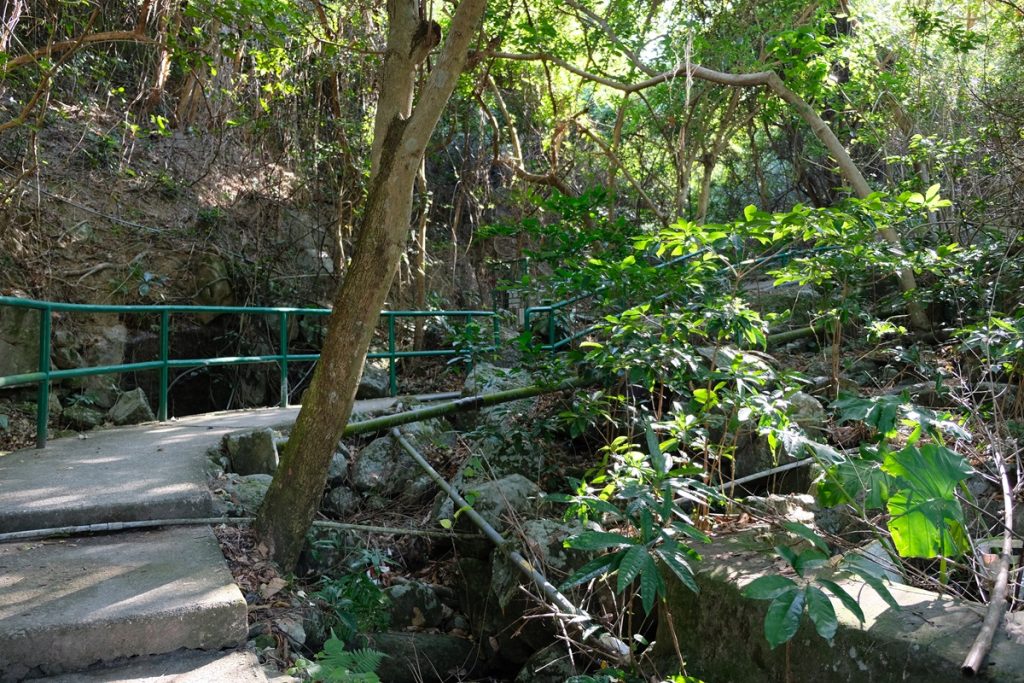
Parts of the trail were shaded like this
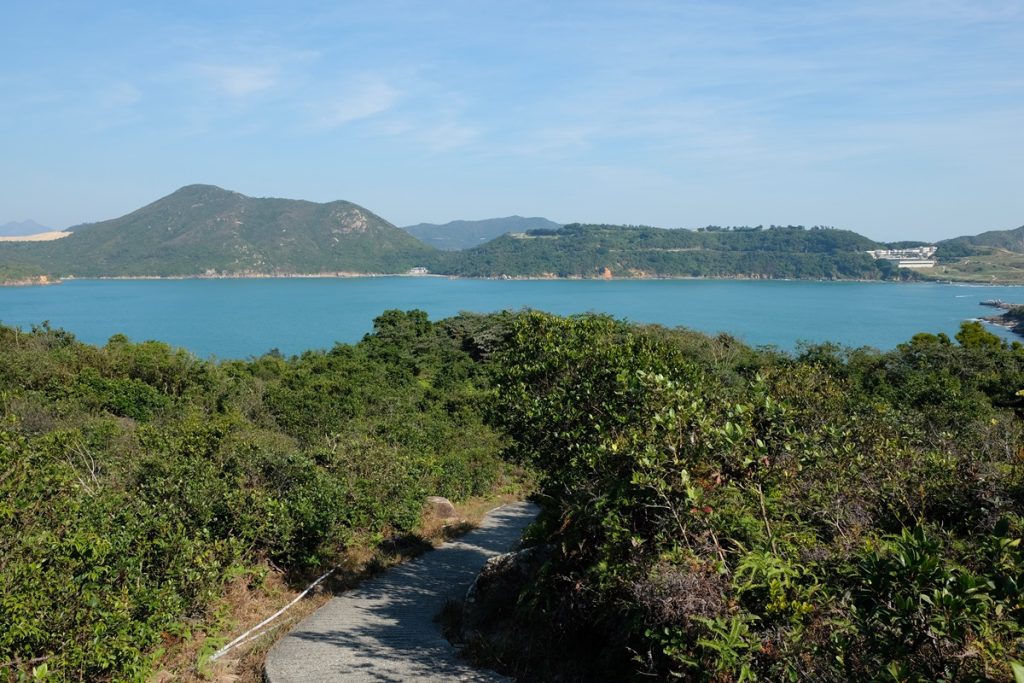
But the higher you go, the shorter the vegetation becomes
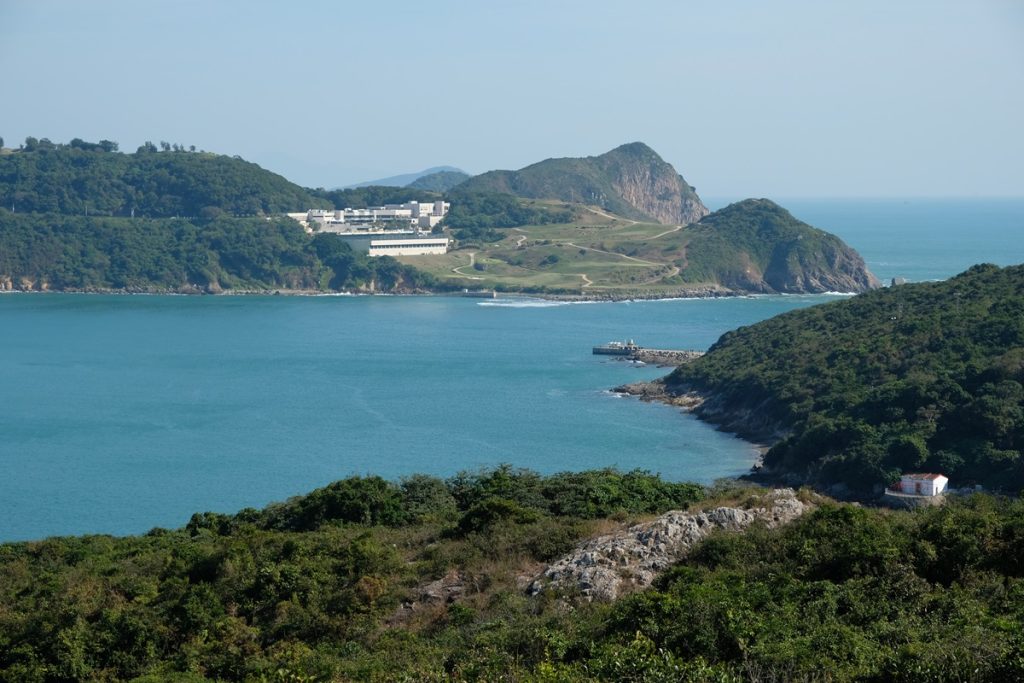
The narrow Fat Tong Mun channel, the main entrance to Victoria Harbour from the east
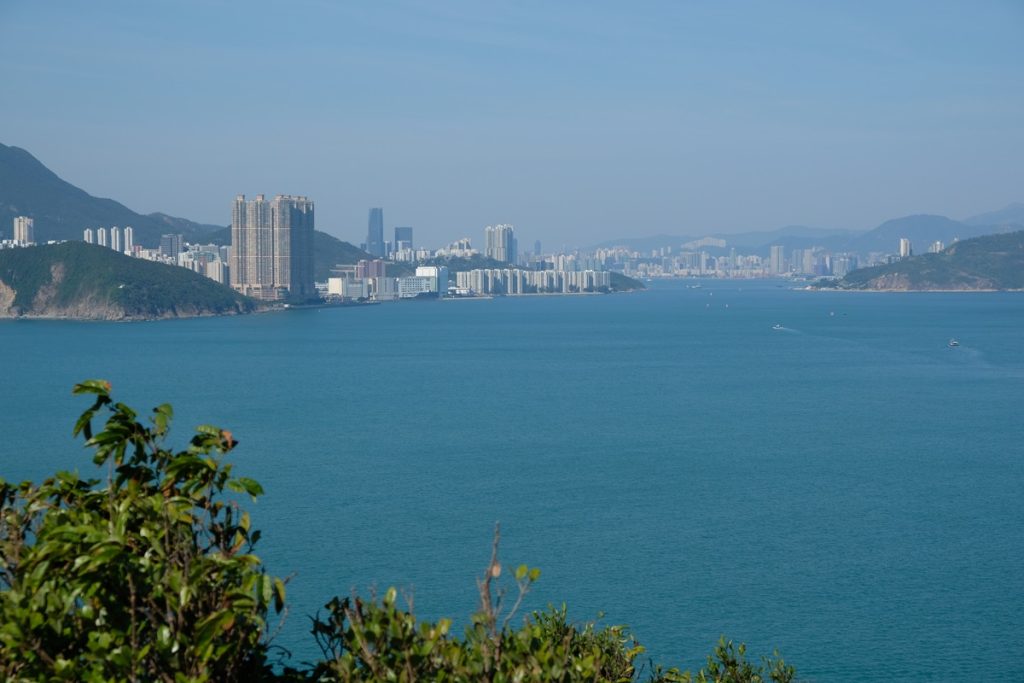
The eastern parts of Hong Kong Island and Kowloon
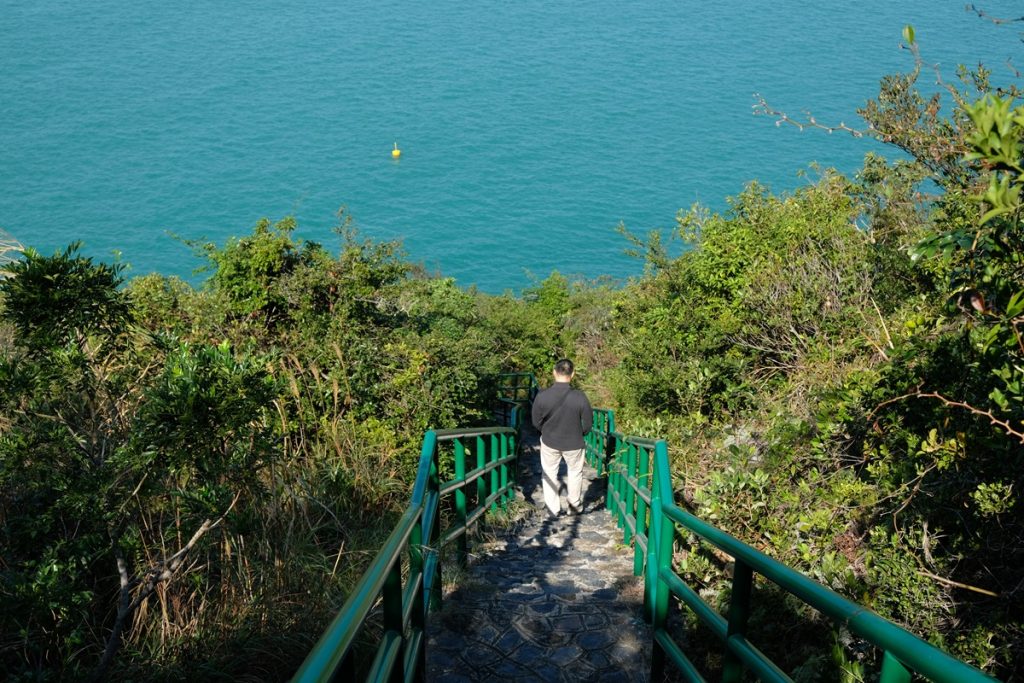
Going down to see the largest ancient rock carving in Hong Kong
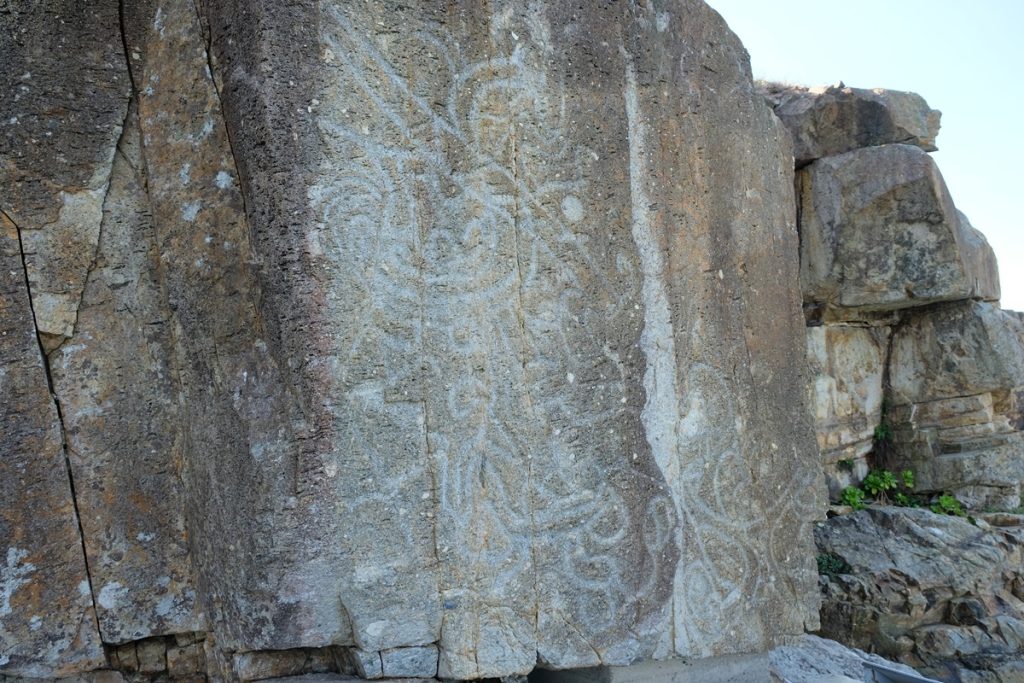
It is said that this depicts a dragon descending to the sea
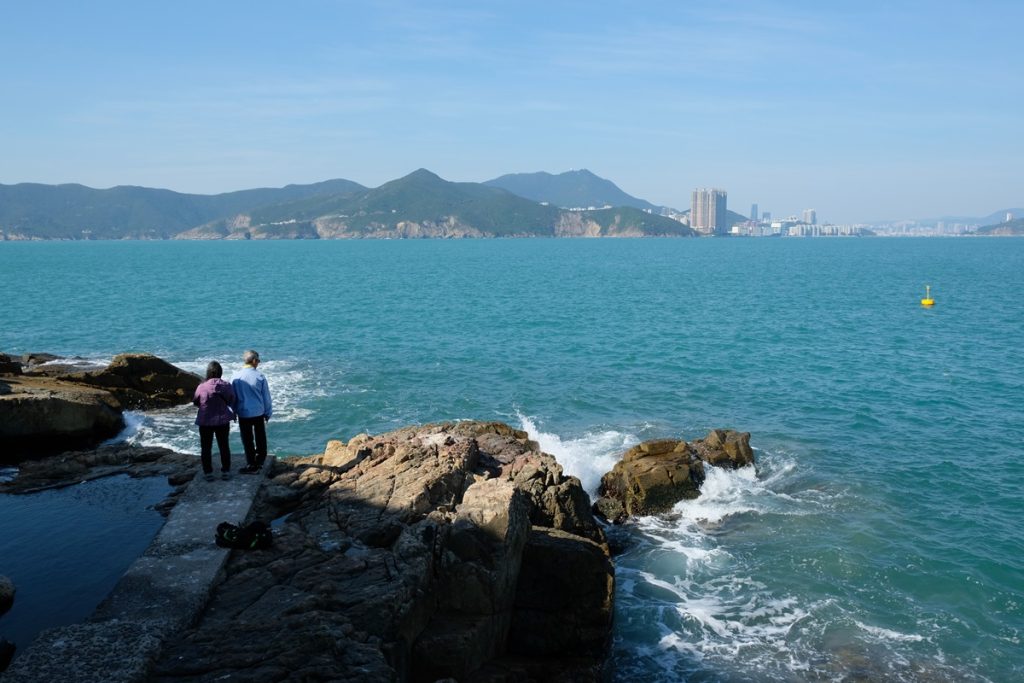
An elderly couple looking out to the city skyline on the horizon
Hong Kong loves to pave the many hiking trails it has, and the ones on Tung Lung Chau were no exception. Part of me think this takes away their natural look, but I also understand that by doing so the city government has provided its residents and visitors alike with better access to its hills and mountains. This undoubtedly encourages people to live a healthier and more active lifestyle, over the temptations of sedentary habits. At first, the trail was very much shaded, but after a while there were only low shrubs around us. Luckily, it was wintertime. I can imagine how much more exhausting it must be to do this in summer. We reached a lookout where the skyline of the eastern parts of Hong Kong Island and Kowloon loomed on the horizon. But that was not what we came here for. Following another pathway, we tackled hundreds of steep steps going straight down to sea level. At the end of this was a Bronze Age artwork experts believe was created some 3,000 years ago. The one on Tung Lung Chau we were looking at is in fact the largest of the seven ancient rock carvings found across Hong Kong.
Since this path was a dead end, we had to go back up the same route, a short but intense exercise that made us pant by the time we reached the top of the steps. But fortunately, from here the rest of the hike proved to be rather easy. We kept following the paved trail leading to a section lined with pandanus trees – whose serrated leaves act as a warning not to get too close to them – which were then followed by another species of plant sporting clusters of flowers that looked rather insignificant individually, but together they really caught our attention. At one point, the trail took us very close to some rocky beaches which were constantly battered by the waves. Shortly afterward, however, we arrived at what remains of the 18th-century Tung Lung Fort, built by the Qing dynasty to ward off pirates operating in these waters. Unfortunately, we couldn’t enter the compound as it was closed off to the public for what seemed to be restoration works.
From the fort, we walked a little further to a viewpoint to see Tung Lung Chau’s dramatic northern cliffs before going to the island’s main pier where we planned to catch the ferry back to the city. Two hours after we started the hike, we were now at a surprisingly scenic white-sand beach situated right next to the northern pier. We spotted a young couple with their dog frolicking on the soft sand, while on the rocky outcrop on the other side of the pier were another couple who preferred to try their luck catching some fish with their fishing rods. It felt very peaceful here, and that’s the beauty of Hong Kong. Despite being one of the most densely populated cities on the planet, there are pockets of tranquility scattered all over the territory to heal weary souls. Less than half an hour later, the slow ferry arrived. For me, the ease of doing such excursions constitutes one of the most alluring qualities of Hong Kong. And that is why I can’t wait to go back.
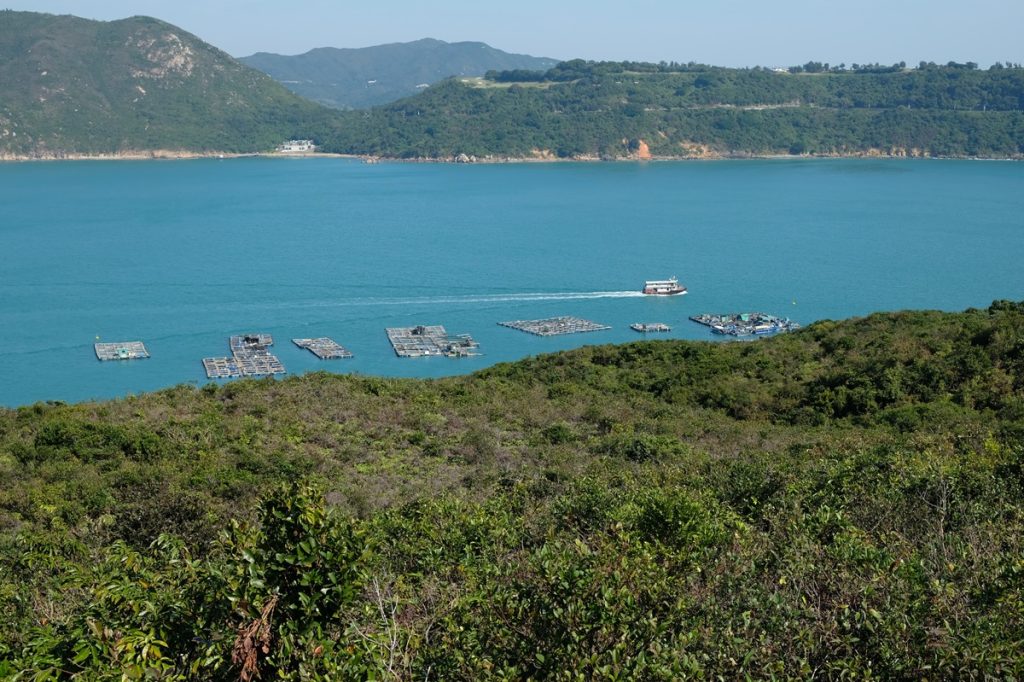
One of the ferry boats passing by floating fish cages